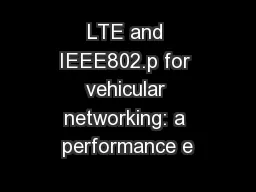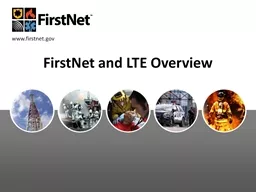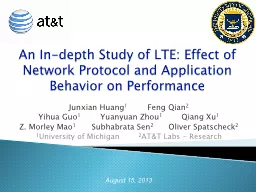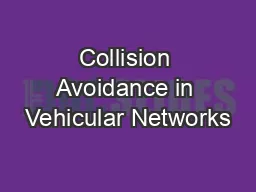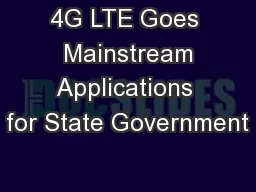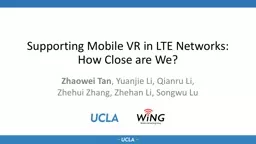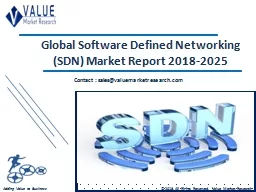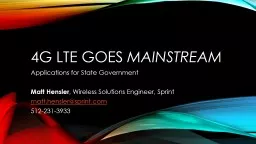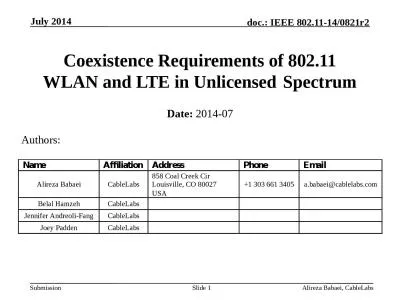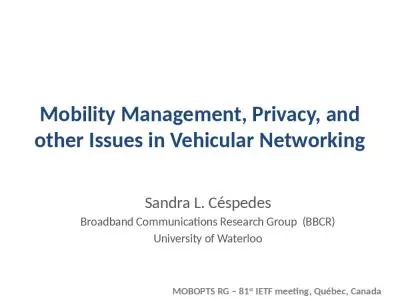PPT-LTE and IEEE802.p for vehicular networking: a performance e
Author : celsa-spraggs | Published Date : 2016-06-19
Zeeshan Hameed Mir Fethi Filali EURASIP Journal on Wireless Communications and Networking 1 Presenter Renato Iida v2 Outline Introduction Related Work Vehicular
Presentation Embed Code
Download Presentation
Download Presentation The PPT/PDF document "LTE and IEEE802.p for vehicular networki..." is the property of its rightful owner. Permission is granted to download and print the materials on this website for personal, non-commercial use only, and to display it on your personal computer provided you do not modify the materials and that you retain all copyright notices contained in the materials. By downloading content from our website, you accept the terms of this agreement.
LTE and IEEE802.p for vehicular networking: a performance e: Transcript
Download Rules Of Document
"LTE and IEEE802.p for vehicular networking: a performance e"The content belongs to its owner. You may download and print it for personal use, without modification, and keep all copyright notices. By downloading, you agree to these terms.
Related Documents

